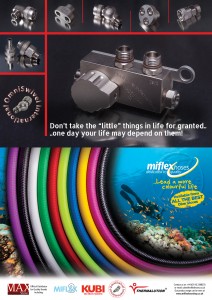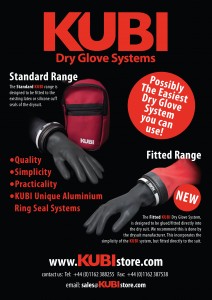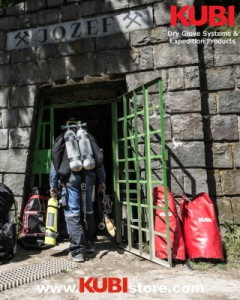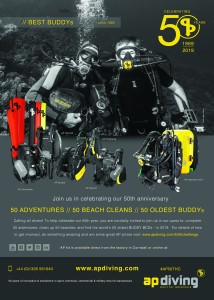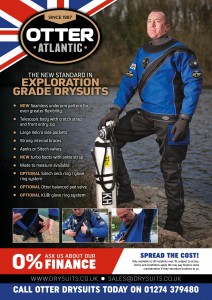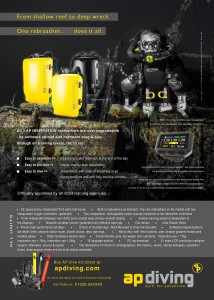DICTIONARY OF EGYPTIAN SHIPWRECKS-Z
DICTIONARY OF EGYPTIAN SHIPWRECKS- Z
FURTHER DETAILS CAN BE DOWNLOADED FROM
www.KUBIstore.com & www.Miflexhoseshop.co.uk
M.V.ZAMALEK
The ZAMALEK was a 1,566 gross ton ship, built 1921 by Ailsa SB Co, Troon as the HALCYON for General Steam Navigation Co, London. In 1934 she was sold to Khedivial Mail SS & Graving Dock Co, London and renamed ZAMALEK. In 1937 the company became Pharaonic Mail Line, Alexandria and in 1940 the ship was taken over by the Ministry of War Transport (General Steam Nav. Co, managers) and converted to a convoy rescue ship. She was involved in the infamous convoy P.Q.17. 1946 returned to Khedivial Mail Line which was then Egyptian owned. 5th Nov.1956 scuttled in Suez Harbour during the Suez War by the Egyptian authorities. 1957 cut up and raised in sections for scrapping.
S.S.ZAMBESI:
The Zambesi was a cargo ship built 22 December 1900 and launched in 1901 by the Bartram Yard (South Dock) for Turner, Brightman & Co., London. A single screw vessel of 3727 tons, 109.8 meters in length and 14 meters in beam, she was contracted to the British Navy and defensively armed for use during WWI.
On 01 April, 1917 she was torpedoed by German submarine U-63 (Otto Schultze) 15 miles North-by-West of Alexandria at 31.26N/29.49E in over 225 meters of water while carrying a cargo of coal Tyne-Port Said route.
S.S.ZEALAND:
The Zealand was a Steam Cargo vessel of 1,433 Grt. built at Barclay, Curle & Co., Whiteinch, Glasgow for Leith, Hull & Hamburg S. P. Co., Ltd., (James Currie & Co., Ltd.), Leith. She was launched on 11 November 1935 and completed in January of 1936. The ship was 262.1 feet in length, 40.4 feet in beam, 15.9 feet in draught, with a triple-expansion engine and single propellers providing her with a speed of 10-12 knots.
On 28 June 1942, the Zealand, under command of Master Lancelot James Branagan, was steaming South-Soutwest of Haifa, Israel with convoy Codename “Metril” consisting of 3 merchant vessels and escorts, when the German submarine U-97 (Friedrich Burgel) fired a spread of two torpedoes at the convoy. At 1316 in the afternoon, the Zealand was hit and sunk at position 32.27N/34.43E taking with her ten crew members and four gunners. The U-97 fired a stern torpedo at 1324 which struck and damaged another merchant vessel in the convoy, the Memas. The escort HMS Islay T172 rescued the Zealand’s master, twelve crewmembers, and six gunners, and then delivered them to Haifa.
S.S ZEALOT
During the BSAC expeditions of the early 90’s we came across wreckage in 40 mtrs on the north east side of Daedalus. Initial research suggested this could be the wreck of a Dutch East Indiamen, the Dacca. Exploring down to the limits of sport diving only revealed long lengths of iron piping. We were certain a wreck existed but never got the chance to dive any deeper. Then in September 2004 I received an SMS from the staff on board M.Y. HURRICANE. A German diver had found some crockery with the words “Helme Park South Shields”.
When the SMS came in I was on my way to the local archives, and within an hour Carolyn Durkin had produced a bill of sale for the vessel from Readheads to the owner William Wright, and then a bill of sale to the second owners John Glynn and Sons of Liverpool. From this documentation, the entire story of the wreck was in my possession-before Markus Lohr, who found the plate had disembarked Hurricane!
From the name lifted from the piece of crockery, Carolyn Durkin was able to
produce the actual bill of sale when the ship was handed over to her owners.
The Zealot began life as the HELME PARK, a 1328 ton 243 ft long “spar decked double skinned iron hull screw steamship”, built in 1873 by John Readhead and Co at the Pilot street works in South Shields, ship # 91. She was fitted with a 2 compound I.D.A. 120hp steam engine, which could deliver 12 knots. William Wright had commissioned the ship to modernise his renowned fleet of sailing vessels. Her master was H. Breham. Wright sold her a year later to J Glynn & Co of Liverpool, who changed her name to Zealot.
THE FINAL VOYAGE
The final voyage began on 26th September, 1887 bound for Bombay.The Zealot was captained by J A Best and was carrying cargo worth £24,700 described as general, 790 cotton bales, 91 cases, and 100 tons of iron” She had a crew of 53, mainly Lascars and two passengers on board.
The journey down through the Mediterranean and the Suez Canal took until the 12th October, and after successfully navigating the straits of Gobul she sailed south towards the Brothers ( her best sighting of landfall) before altering to a course which would take her close to Daedalus for another sighting, and then south intending to pass to the east of Zabagad on her journey southward..
As they closed towards Daedalus the light appeared dead ahead and not abeam, the in experienced first mate Jonathan Russel reacted too slowly in taking action and the vessel struck a coral ridge ripping out her bottom and she quickly began to fill with water. The crew and passengers were put into the boats and the captain ran the bow onto the reef enabling the remaining crew to jump ashore. The vessel then settled and sank into deep water, rolling onto her side spilling out cargoes she tumbled down the reef. The Iron pipes, originally thought to have been rubbish from the building of the lighthouse are the first clue of what lies below in very deep water.
The crew and passengers were taken aboard a passing ship bound for Suez.
At the board of trade enquiry the cause of loss was attributed to the first mates lack of navigation skills, but apportioned some of the blame wards the master. Captain Best’s ticket was suspended for six months.
The wreck starts at 82 mtrs sloping down to 119 mtrs on the west side of the island. From an initial dive, she appears to be intact from amidships aft. However Grant Seacranke later found the bow section and describes it as “CARNATIC LKE BUT FLATTENED”. Judging from the reports the wreck is spread over a large area. As the Dacca sank in the same area , it is possible that both vessels lie together- both would be very similar vessels and sank only 10 years apart.
Sadly a group of Italian divers found the wreck early in 2005 and pillaged many artefacts from the wreck, claiming they were looking for evidence to her identification. Vital clues may now never come to light and the Location of the Dacca never revealed. But who knows- the Zealot surprised us all!
——————————
S.S.ZIETIEH
THE SINKINGS
On 26th August 1914,the Zietieh was along side a quay at Suez loading with spares for the oil fields of Ashrafi , Quisum and Ganim, when she sank. By the 21st of September she was once again in service, carrying out her duties as a general supply vessel. The Zietieh was at anchor close to Ras Ziet on January 29th 1915, when she caught fire during an oil burner change over. Her boiler and deck cargo shifted and she began to ship water, finally capsizing with a list to port
She has a straight rake bow, and a fantail stern, typical of the 1890-1900 type of hull. .
The raised fo’c’sle is accessible with only iron framework remaining, with lamps and other artefacts lying in the chain locker. The starboard anchor chain runs out along the sand to anchor. A weather deck runs aft from the engine room to the steering quadrant and she has high running boards- almost tug like. All the wooden decking has gone, revealing iron framework, heavily encrusted with sponge and sea fir. Companionways run alongside the bridge and engine room, starboard accessible, port in sand.
THE SHIP
The Zietieh was built at Maryport at the yard of William Walker, Shipbuilders in 1911. She was the last vessel to be launched beam on at the yard. She was a steel screw steamship, machinery aft, fitted for liquid fuel-oil burning, with a through hold and suspended bridge. She was 291 tons, 121ft long, with a 22ft beam. She was powered by a – 2 cy 15″,32″ 27″ stroke 42hp, fed by a single scotch boiler supplied by J RITCHIE &Co. Her owners were the EGYTIAN OIL TRUST, later the ANGLO EGYPTIAN OILFIELDS Ltd.
The Zietieh now lies on her port side on a flat sandy sea bed, in only 12 mtrs of water. Her distinctive bow and stern enabled us to guess her age to within 2 years!
she has a single hold forward served by a deck winch just behind the fo’c’le, although there are no signs of a mast. In the hold is a cargo of prefabricated narrow gauge railway track in straight lengths of 6mtrs, some of the cargo lies 20 mtrs away from wreck. A small compact bridge straddles the aft section of the hold and has a single door forward. Above this is an open navigation bridge and wheelhouse. The helm is in place but oddly facing the stern.
The engine room is completely intact with all her fittings, valves, piping and gauges
The tall straight funnel, is broken off and lying on the sea bed, home to a family of snapper. One blade of the prop is missing , the rudder still in place but the keel is bent below the rudder assembly, otherwise there is no sign of any damage to the wreck
Hard corals encrust the upper port side of the hull, which is made of overlapping plates which are beginning to rot away, allowing an eerie light to filter through into her single hold. The wreck is a haven for marine life; large groupers, shoals of red sea snapper, free-swimming snowflake morays, and many large pyjama nudibranchs grazing of red sponge. Unusually there are spinney urchins out during the daytime, with fish colonies. Batfish and map of Africa Angel fish too are found patrolling the wreck. Lies on its port side 11.8 mtrs, starboard side in 4 mtrs
Due to the fact that few divers visit this wreck hard corals have flourished and the hull has become living reef. Staghorn corals are very well established and are a haven for many schools of small reef fishes, countless nudibranchs and some interesting examples of symbiosis. It is however a small wreck, and although rarely visited it can be crowded even with the guests from only one boat. Diving in waves helps the congestion. Strong currents are also experienced on the wreck despitr its sheltered location
MV ZINGARA
ZINGARA.(AKA KORMORAN) Built by VEB Schiffwerft at Rostock, as the “Kormoran” in 1963. 1976 saw her name was changed to “Adamastos.” In 1980, she was again renamed Zingara. She was a 1,582 ton 82.4m long general cargo vessel, two main holds and superstructure aft.6 cylinder diesel engines gave her a top speed of 12 knots
The Zingara’s final journey was from Aqaba on 21st August 1984 with a cargo of Phosphate Rock. Next day she ended up on Laguna reef and declared a total constructive loss. Her life as a diving attraction was almost short lived when the Royal Viking Sun ran aground only a few hundred meters south of the wreck area.
Situated at the northern end of LAGUNA REEF, the wreck is easy to locate as her stern still breaks the surface. Today It is by no means a colourful wreck ,yet has a unique atmosphere all of its own and perhaps the presence of so many portholes is an added bonus. The wreck is totally flattened, with her stern awash, covering a large area of the reef, in only 8 mtrs. To this end any presence of swell can rule out diving the wreck. The hull and superstructure are totally flattened, with winches, and deck machinery standing proud. Huge sections of the deck lie at a slight angle and sections of her double skin provide cavities for fish to shelter in. Hawsers lie every where. By following the general direction of the wreck the remains of the bow can be explored with the name KORMORAN still visible, although loose plates at beginning to obscure this. An anchor chain runs out over the reef past her radio mast to a bank of superb staghorn corals Watch out for whitetips in the late afternoon. Large derricks litter the wreck and there are still many portholes both square and round.
Perhaps the most attractive feature of this wreck is her depth, ~ only 8 metres, and in the late afternoon sun the wreck takes on an eerie atmospheric light, and is superb for photography. Her intact stern complete with hand rails seem to have been positioned perfectly for the sun as it begins to set, as sunbeams dance across the stern. As a photographic studio she is ideal. Glass fish amass in the stern section and groupers are cautiously taking up residence. Small sections of the wreck are starting to be colonized with hard corals. The fish life is very active with colourful surgeon fish one of the predominant species. Moray eels too have moved in to the wreck, her plates and girders an ideal home for these photographic creatures.
As the stern hangs on the edge of the reef, this is the usual start point for the dive, and with the wreck well flattened and dispersed it is simple a matter of following the wreckage to the bow and back! Check out the stern interior-you will see the remains of a tiled floor, moving along the wreckage the engine is next followed by flattened sections of the superstructure, box sections and winches The bow is hard into the reef and some of the letters can still be seem swim around this section- there are some small sections to explore before retracing your steps back to the stern.
H.M.S ZULU.
A tribal class destroyer, built at Glasgow by A. Stevens & Son, launched in 1937. She was initially based in Malta She was 1870 tons 355 ft long, with a 36 ft beam her turbine engines could deliver 44,000shp giving her a speed of 36 knots. She was armed with eight 4.7 inch guns, 7 guns smaller and 4 torpedo tubes .She was under the command of captained by Lt. A R Moore
She is best known for her part in the hunt for the German raider Bismark
During the attacks on Tubruk, she was damaged by the coastal batteries and then attacked by seven German aircraft. A bomb struck her in her engine room and the ensuing explosion rendered her dead in the water. HMS CROONE took of most of her crew and HMS HURSLEY took her under tow, an emergency crew trying to keep her afloat, when she was struck again by enemy aircraft. She rolled over and sank, taking 39 of her crew and Captain Moore with her.
